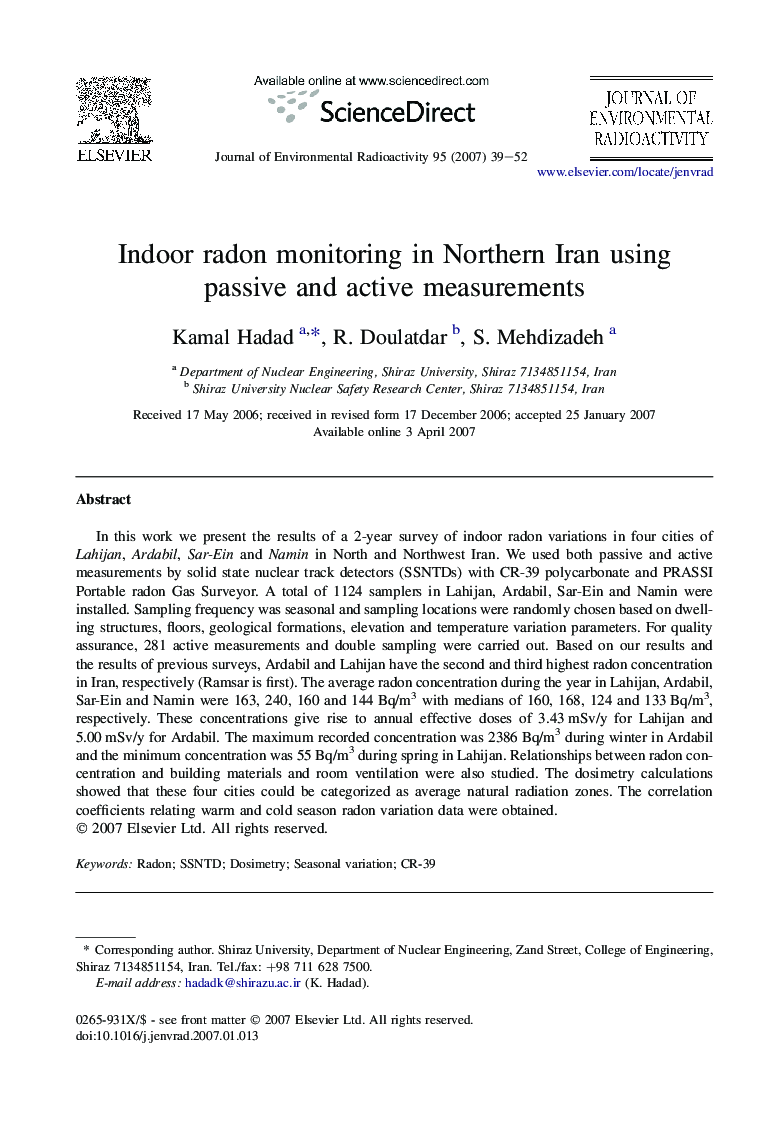| Article ID | Journal | Published Year | Pages | File Type |
|---|---|---|---|---|
| 1739557 | Journal of Environmental Radioactivity | 2007 | 14 Pages |
Abstract
In this work we present the results of a 2-year survey of indoor radon variations in four cities of Lahijan, Ardabil, Sar-Ein and Namin in North and Northwest Iran. We used both passive and active measurements by solid state nuclear track detectors (SSNTDs) with CR-39 polycarbonate and PRASSI Portable radon Gas Surveyor. A total of 1124 samplers in Lahijan, Ardabil, Sar-Ein and Namin were installed. Sampling frequency was seasonal and sampling locations were randomly chosen based on dwelling structures, floors, geological formations, elevation and temperature variation parameters. For quality assurance, 281 active measurements and double sampling were carried out. Based on our results and the results of previous surveys, Ardabil and Lahijan have the second and third highest radon concentration in Iran, respectively (Ramsar is first). The average radon concentration during the year in Lahijan, Ardabil, Sar-Ein and Namin were 163, 240, 160 and 144Â Bq/m3 with medians of 160, 168, 124 and 133Â Bq/m3, respectively. These concentrations give rise to annual effective doses of 3.43Â mSv/y for Lahijan and 5.00Â mSv/y for Ardabil. The maximum recorded concentration was 2386Â Bq/m3 during winter in Ardabil and the minimum concentration was 55Â Bq/m3 during spring in Lahijan. Relationships between radon concentration and building materials and room ventilation were also studied. The dosimetry calculations showed that these four cities could be categorized as average natural radiation zones. The correlation coefficients relating warm and cold season radon variation data were obtained.
Related Topics
Physical Sciences and Engineering
Energy
Nuclear Energy and Engineering
Authors
Kamal Hadad, R. Doulatdar, S. Mehdizadeh,
